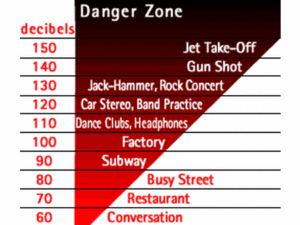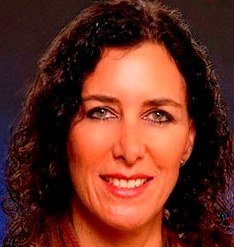
Hearing loss typically begins at frequencies that are much higher than what a hearing test detects.
You could be losing hearing at higher frequencies without this being detected on a routine test.
So let’s say your hearing loss is beginning at 19,000 Hz and gradually getting lower.
You won’t know you’re experiencing hearing loss at these higher frequencies!
However, one way you could find out is if you establish a baseline by testing your hearing range off of a YouTube sine wave tone and then check back yearly.
Once you think you’ve determined the upper limit in Hertz, you should then listen to a few other YouTube audios at that same frequency to see if you can hear them.
After all, these YouTube audios may not be accurate and are no replacement for an audiologist’s audiogram.
But certainly, if your limit is, say, 13,000 Hz, you’re not going to be able to detect a 17,000 Hz tone on YouTube.
So with that said, we can assume that as a generality, YouTube can give you an idea, an approximation, of what frequency neighborhood you can just barely hear with your computer volume turned up.
But what about at the audiologist’s office? Why does the standard hearing test go up to only 8,000 or 6,000 Hz?
“To me it seems obvious there is no need to test or necessarily know about hearing loss that is outside of the critical hearing range for humans,” says Rachel Raphael, M.A., CCC-A, an audiologist with ENT Baltimore.
“The ‘speech banana’ (frequencies needed for speech understanding) ranges roughly from 250 Hz to 6kHz, so when we test 250 Hz to 8kHz on a standard test, it gives us the important information we need.
“Testing beyond 12kHz will not give useful or practical information for humans and the range at which we need to hear.”
Super Hearing
When I was in college my brother built a gadget the size of a thick wallet that emitted a very high frequency pitch. My siblings could not hear it, but I could and it hurt.
I could hear it from across a room. I would hear that thing even without knowing my brother was pressing the button (I’d suddenly hear it, turn, and there he was), which rules out any chance of imaginary hearing from a self-fulfilling prophecy.
He said it was 25,000 Hz. I don’t know how he calculated this, but he could barely hear it in his hand; nobody else heard it at all; and I could hear it from across a room.
So if it wasn’t 25,000 Hz, it still must have been pretty high up there nonetheless.
Imagine my dismay recently when I decided to test my frequency on YouTube and could not hear above 11,000 Hz!
(My “other” kind of hearing—being able to decipher voices from a distance and amid a noisy room—is still impressive.)
So all these years, I’ve been losing my hearing at higher frequencies. Several years ago I had a hearing test just for the heck of it.
But this standard hearing test did not tell me how many Hz I could detect.
Instead the results were in the form of how well my hearing was, relative to other people in my age bracket—for both high frequency and the ability to decipher soft sounds and sounds amid other noise.
Had I known that I’d been losing my very high frequency hearing all these years, I would have been more aggressive about hearing protection (which I’ve always thought I was, but I suppose I could have been more strict).
“A first hearing test serves as a baseline, from which we can document later changes in hearing,” says Raphael.
“We are not often lucky enough to have information/test data preceding trauma such as a motor vehicle accident.
“It’s always helpful and useful for a person to get a hearing test (to serve as a baseline) whenever they begin to notice or suspect some hearing loss and/or tinnitus.
“They may not end up acting on the loss (remediation) until many years later, as hearing loss slowly progresses.
“Anyone who works in a loud work environment (like in construction, factory work, etc.) would probably benefit from a baseline audiogram early in their career, and perhaps annually thereafter.
“Without an earlier (baseline) hearing test, we can only infer (based on typical age-related hearing loss norms) which portion of hearing loss is age related and which is from other factors, such as trauma.
“Nevertheless, most people have their hearing tested/ screened in first grade (average age six), and not tested again until as an adult they present to the doctor/audiologist with some subjective loss and/or tinnitus.”
Okay, so I’ve lost my amazing high frequency hearing. It had always pleased me greatly to be able to hear the high frequency pitch of jewelry store alarms that nobody else could hear.


























